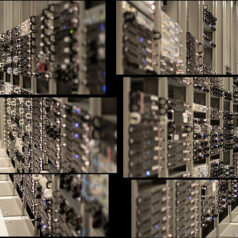How To Use Heat from Data Centers to Power Buildings

Data centers make it easier and more cost-effective for businesses of all sizes to safely store their vital information. However, as the world’s data storage needs continuously increase, it has become necessary to build huge centers that require an immense amount of energy to operate. This is primarily because servers need to be kept below a certain temperature, and this cooling actually generates a lot of heat.
Consequently, many companies and cities have begun embracing the idea of harnessing this energy to help provide sustainable heat for other buildings. This is a much more eco-friendly approach than relying on electricity and other heat sources, and it could also dramatically reduce expenses.
How Does This Process Work?
According to media reports, the basic process of turning data center waste heat into a viable resource for other buildings requires taking the heat that is typically released from the building and into the atmosphere, and instead channelling it into hot water pipes. In fact, this is exactly what the city of Seattle intends to do; it will provide sustainable heat and hot water throughout two local neighborhoods.
If this provides the anticipated results, it is very likely that this program would eventually be expanded to help the city meet its goal of becoming more environmentally friendly. This idea is based partially around successful district heating systems that are currently operational in Vancouver, British Columbia.
As an aside, one of the Google data centers in Atlanta, in the outskirts in Douglas County, is joining the ranks of this eco-movement but in a different way. Instead of the mechanical means of cooling their facility, they use grey water within cooling towers to maintain their servers at the proper temperature. The runoff is further treated before exiting into the Chattahoochee River.
A Prime Example of This Innovative Approach
Intel created a system in 2007 to enable the conversion of existing structures into certified green buildings. They utilized heat recovery chillers in their data center to capture all of the heat produced by the equipment, including the servers. This heat was then used to provide hot water to the facility’s kitchen and bathrooms year-round, and the data center heat waste was also utilized to warm the entire building during the winter.
Although creating the necessary infrastructure did require a substantial financial investment, the estimated annual savings realized by putting this method in place was an astounding $235,000. With this in mind, it is easy to understand why forward-thinking cities, such as Seattle, are so intrigued by the idea of using waste heat that is produced by running their data centers.
It remains to be seen just how much of a positive impact district heating systems, powered by data center heat waste, will have on the environment. However, it is definitely a greener approach than traditional methods. Additionally, powering a building or even an entire neighborhood via one of these systems provides a sustainable heat source, and this is definitely something to strive towards.
Ultimately, if every data center in the world was converted to the collection of heat waste, it could dramatically reduce the overall consumption of electricity and gas. This would definitely benefit the earth, and make living more affordable.
Writer LaGeris Underwood Bell is intrigued by the ways businesses can become more energy-efficient. She can just imagine that many data centers in Atlanta and various other places could benefit from such heating systems, especially during the cold winter months.
Photo credit: http://www.flickr.com/photos/mkumm/3066726386/
